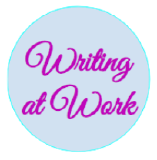3.4: Revising and Editing
- Page ID
- 28069
Revising and Editing

Revising and editing are the two tasks you undertake to significantly improve your essay. Both are very important elements of the writing process. You may think that a completed first draft means little improvement is needed. However, even experienced writers need to improve their drafts and rely on peers during revising and editing. You may know that athletes miss catches, fumble balls, or overshoot goals. Dancers forget steps, turn too slowly, or miss beats. For both athletes and dancers, the more they practice, the stronger their performance will become. Web designers seek better images, a more clever design, or a more appealing background for their web pages. Writing has the same capacity to profit from improvement and revision.
Understanding the Purpose of Revising and Editing
Revising and editing allow you to examine two important aspects of your writing separately, so that you can give each task your undivided attention.
- When you revise, you take a second look at your ideas. You might add, cut, move, or change information in order to make your ideas clearer, more accurate, more interesting, or more convincing.
- When you edit, you take a second look at how you expressed your ideas. You add or change words. You fix any problems in grammar, punctuation, and sentence structure. You improve your writing style. You make your essay into a polished, mature piece of writing, the end product of your best efforts.
Here are some strategies that writers have developed to look at their first drafts from a fresh perspective. Try them over the course of this semester; then keep using the ones that bring results.
- Take a break. You are proud of what you wrote, but you might be too close to it to make changes. Set aside your writing for a few hours or even a day until you can look at it objectively.
- Ask someone you trust for feedback and constructive criticism.
- Use the resources that your college provides. Find out where your school?s writing lab is located and ask about the assistance they provide online and in person.
- Pretend you are one of your readers. Are you satisfied or dissatisfied? Why?
Many people hear the words "critic," "critical," and "criticism" and pick up only negative vibes that provoke feelings that make them blush, grumble, or shout. However, as a writer and a thinker, you need to learn to be critical of yourself in a positive way and have high expectations for your work.
You also need to train your eye and trust your ability to fix what needs fixing. For this, you need to teach yourself where to look. Having a critical eye means having the ability to look at how something works (and whether it could work better) without getting emotional or attached to the object of that critical examination. Cultivating the skill of objective criticism will serve you well as a writer and student.
When you reread your writing to find revisions to make, look for each type of problem in a separate sweep. Read it straight through once to locate any problems with unity. Read it straight through a second time to find problems with coherence. You may follow this same practice during many stages of the writing process.
Completing a Peer Review

After working so closely with a piece of writing, writers often need to step back and ask for a more objective reader. What writers most need is feedback from readers who can respond only to the words on the page. When they are ready, writers show their drafts to someone they respect and who can give an honest response about its strengths and weaknesses. Often, professors will set this up using specific worksheets or peer review directions that they have developed for each assignment. Follow those directions closely.
You, too, can ask a peer to read your draft when it is ready. After evaluating the feedback and assessing what is most helpful, the reader's feedback will help you when you revise your draft. This process is called "peer review."
You can work with a partner in your class and identify specific ways to strengthen each others essays. Although you may be uncomfortable sharing your writing at first, remember that each writer is working toward the same goal: a final draft that fits the audience and the purpose. Maintaining a positive attitude when providing feedback will put you and your partner at ease.
The box that follows provides a useful framework for the peer review session, if you aren't given specific directions from a professor:
Questions for Peer Review
Title of essay:
Date:
Writer's name:
Peer reviewer's name:
1. This essay is about . . .
2. Your main points in this essay are:
3. What I most liked about this essay:
4. These three points struck me as your strongest:
a. Point:
Why:
b. Point:
Why:
c. Point:
Why:
These places in your essay are not clear to me:
a. Where:
Needs improvement because:
b. Where:
Needs improvement because
c. Where:
Needs improvement because
The one additional change you could make that would improve this essay significantly is:
Exercise: Peer Review

Exchange essays with a classmate and complete a peer review of each other's draft in progress. Remember to give positive feedback and to be courteous and polite in your responses. Focus on providing one positive comment and one question for more information to the author.
Use the following questions to direct your peer review:
Questions for Peer Review
Title of essay:
Date:
Writer's name:
Peer reviewer's name:
1. This essay is about . . .
2. Your main points in this essay are:
3. What I most liked about this essay:
4. These three points struck me as your strongest:
a. Point:
Why:
b. Point:
Why:
c. Point:
Why:
These places in your essay are not clear to me:
a. Where:
Needs improvement because:
b. Where:
Needs improvement because
c. Where:
Needs improvement because
The one additional change you could make that would improve this essay significantly is:
Using Feedback

Using Feedback Objectively
The purpose of peer feedback is to receive constructive criticism of your essay. Your peer reviewer is your first real audience, and you have the opportunity to learn what confuses and delights a reader so that you can improve your work before sharing the final draft with a wider audience (or your intended audience).
It may not be necessary to incorporate every recommendation your peer reviewer makes. However, if you start to observe a pattern in the responses you receive from peer reviewers, you might want to take that feedback into consideration in future assignments. For example, if you read consistent comments about a need for more research, then you may want to consider including more research in future assignments.
Using Feedback from Multiple Sources
You might get feedback from more than one reader as you share different stages of your revised draft. In this situation, you may receive feedback from readers who do not understand the assignment or who lack your involvement with and enthusiasm for it. You need to evaluate the responses you receive according to two important criteria:
- Does the feedback support the purpose of the assignment?
- Does the feedback suggest revisions that are appropriate to the audience?
Then, using these standards, accept or reject revision feedback.
Creating Unity and Coherence

Following your outline closely offers you a reasonable guarantee that your writing will stay on purpose and not drift away from the controlling idea. However, when writers are rushed, are tired, or cannot find the right words, their writing may become less than they want it to be. Their writing may no longer be clear and concise, and they may be adding information that is not needed to develop the main idea.
When a piece of writing has unity, all the ideas in each paragraph and in the entire essay clearly belong and are arranged in an order that makes logical sense. When the writing has coherence, the ideas flow smoothly. The wording clearly indicates how one idea leads to another within a paragraph and from paragraph to paragraph.
Reading your writing aloud will often help you find problems with unity and coherence. Listen for the clarity and flow of your ideas. Identify places where you find yourself confused, and write a note to yourself about possible fixes.
Creating Unity
Sometimes writers get caught up in the moment and cannot resist a good digression. Even though you might enjoy such detours when you chat with friends, unplanned digressions usually harm a piece of writing.
Mariah's Essay
Mariah stayed close to her outline when she drafted the three body paragraphs of her essay she tentatively titled "Digital Technology: The Newest and the Best at What Price?" But a recent shopping trip for an HDTV upset her enough that she digressed from the main topic of her third paragraph and included comments about the sales staff at the electronics store she visited. When she revised her essay, she deleted the off-topic sentences that affected the unity of her essay. Compare the following paragraphs to see how Mariah's changes helped maintain unity.
|
Original Paragraph |
Edited Paragraph |
| Nothing is more confusing to me than choosing among televisions. It confuses lots of people who want a new high-definition digital television (HDTV) with a large screen to watch sports and stream on. You could listen to the guys in the electronics store, but word has it they know little more than you do. They want to sell you what they have in stock, not what best fits your needs. You face decisions you never had to make with the old, bulky televisions. | Nothing is more confusing to me than choosing among televisions. It confuses lots of people who want a new high-definition digital television (HDTV) with a large screen to watch sports and stream on. You face decisions you never had to make with the old, bulky televisions. |
Transitions, Wordiness, and Clarity

Careful writers use transitions to clarify how the ideas in their sentences and paragraphs are related. These words and phrases help the writing flow smoothly. Adding transitions is not the only way to improve coherence, but they are often useful and give a mature feel to your essays. The Table of Common Transitional Words and Phrases groups many common transitions according to their purpose:
Table of Common Transitional Words and Phrases
| Transition Type | Words |
| Transitions That Show Sequence or Time | after, before, later, afterward, before long, meanwhile, as soon as, finally, next, at first, first, second, third, soon, at last, in the first place, then |
| Transitions That Show Position | above, across, at the bottom, at the top, behind, below, beside, beyond, inside, near, next to, opposite, to the left, to the right, to the side, under, where |
| Transitions That Show a Conclusion | indeed, hence, in conclusion, in the final analysis, therefore, thus |
| Transitions That Continue a Line of Thought | consequently, furthermore, additionally, because, besides the fact, following this idea, further, in addition, in the same way, moreover, looking further, considering, it is clear that |
| Transitions That Change a Line of Thought | but, yet, however, nevertheless, on the contrary, on the other hand |
| Transitions That Show Importance | above all, best, especially, in fact, more important, most important, most, worst |
| Transitions That Introduce the Final Thoughts in a Paragraph or Essay | finally, last, in conclusion, most of all, least of all, last of all |
| All-Purpose Transitions to Open Paragraphs or to Connect Ideas Inside Paragraphs | admittedly, at this point, certainly, granted, it is true, generally speaking, in general, in this situation, no doubt, no one denies, obviously, of course, to be sure, undoubtedly, unquestionably |
| Transitions that Introduce Examples | for instance, for example |
| Transitions That Clarify the Order of Events or Steps | first, second, third, generally, furthermore, finally, in the first place, also, last, likewise, lastly |
Mariah's Essay
After Mariah revised for unity, she next examined her paragraph about televisions to check for coherence. She looked for places where she needed to add a transition or perhaps reword the text to make the flow of ideas clear. In the version that follows, she has already deleted the sentences that were off topic.
Many writers make their revisions on a printed copy and then transfer them to the version on-screen. They conventionally use a small arrow called a caret (^) to show where to insert an addition or correction.
^ Finally, Nothing is more confusing to me than choosing among televisions. It confuses lots of people who want a new high-definition digital television (HD television) with a large screen to watch sports and stream on. ^ There's good reason for this confusion: You face a decision you never had to make with the old, bulky picture-tube televisions. ^ The first big decision is the screen resolution you want. Screen resolution means the number of horizontal scan lines the screen can show. This resolution is often 1080p, or full HD, or 768p. The trouble is that if you have a smaller screen, 32 inches or 37 inches diagonal, you won't be able to tell the difference with the naked eye. The ^ second other important decision you face as you walk around the sales floor is whether to get a plasma screen or an LCD screen. ^ Along with the choice of display type, a further decision buyers face is screen size and features. Plasma flat-panel television screens can be much larger in diameter than their LCD rivals. Plasma screens show truer blacks and can be viewed at a wider angle than current LCD screens. ^ However, Large flat-panel plasma screens are much more expensive than flat-screen LCD models. Don't buy more television than you need!
Being Clear and Concise
Some writers are very methodical and painstaking when they write a first draft. Other writers unleash a lot of words in order to get out all that they feel they need to say. Do either of these composing styles match your style? Or is your composing style somewhere in between? No matter which description best fits you, the first draft of almost every piece of writing, no matter its author, can be made clearer and more concise. If you have a tendency to write too much, you will need to look for unnecessary words. If you have a tendency to be vague or imprecise in your wording, you will need to find specific words to replace any overly general language.
Identifying Wordiness
Sometimes writers use too many words when fewer words will appeal more to their audience and better fit their purpose.
Here are some common examples of wordiness to look for in your draft. Eliminating wordiness helps all readers, because it makes your ideas clear, direct, and straightforward.
- Sentences that begin with "There is" or "There are."
Wordy: There are two major experiments that the Biology Department sponsors.
Revised: The Biology Department sponsors two major experiments.
- Wordy: Two extremely famous and well-known consumer advocates spoke eloquently in favor of the proposed important legislation.
Revised: Two well-known consumer advocates spoke in favor of the proposed legislation.
- Sentences with deadwood phrases that add little to the meaning. Be judicious when you use phrases such as "in terms of," "with a mind to," "on the subject of," "as to whether or not," more or less," "as far as __is concerned," and similar expressions. You can usually find a more straightforward way to state your point.
Wordy: As a world leader in the field of green technology, the company plans to focus its efforts in the area of geothermal energy. A report as to whether or not to use geysers as an energy source is in the process of preparation.
Revised: As a world leader in green technology, the company plans to focus on geothermal energy. A report about using geysers as an energy source is in preparation.
- Sentences in the passive voice or with forms of the verb "to be." Sentences with passive-voice verbs often create confusion, because the subject of the sentence does not perform an action. Sentences are clearer when the subject of the sentence performs the action and is followed by a strong verb. Use strong active-voice verbs in place of forms of "to be," which can lead to wordiness. Avoid passive voice when you can.
Wordy: It might perhaps be said that using a GPS device is something that is a benefit to drivers who have a poor sense of direction.
Revised: Using a GPS device benefits drivers who have a poor sense of direction.
- Wordy: The ebook reader, which is a recent invention, may become as commonplace as the cell phone. My over-sixty uncle bought an ebook reader, and his wife bought an ebook reader, too.
Revised: The ebook reader, a recent invention, may become as commonplace as the cell phone. My over-sixty uncle and his wife both bought ebook readers.
Exercise: Clarity in Writing

Class Discussion
After reading Mariah's revised paragraph:
- Do you agree with the transitions and other changes that Mariah made to her paragraph? Which would you keep and which were unnecessary? Explain.
- What transition words or phrases did Mariah add to her paragraph? Why did she choose each one?
- What effect does adding additional sentences have on the coherence of the paragraph? Explain. When you read both versions aloud, which version has a more logical flow of ideas? Explain.
Revise your Essay
Now return to the first draft of the essay you wrote.
- Revise it for coherence.
- Add transition words and phrases where they are needed, and
- make any other changes that are needed to improve the flow and connection between ideas.
- Check it for unnecessary words. Try making your sentences as concise as they can be. Choose specific, appropriate Words
Tone

Most college essays should be written in formal English, suitable for an academic situation. Follow these principles to be sure that your word choice is appropriate.
- Avoid slang. Find alternatives to "bummer," "kewl," and "rad."
- Avoid language that is overly casual. Write about "men and women" rather than "girls and guys" unless you are trying to create a specific effect. A formal tone calls for formal language.
- Avoid contractions. Use "do not" in place of "don't," "I am" in place of "I'm," "have not" in place of "haven't," and so on. Contractions are considered casual speech.
- Avoid clichés. Overused expressions, such as "green with envy," "face the music," and "better late than never," are empty of meaning and may not appeal to your audience.
- Watch out for Homophones. Be careful when you use words that sound alike but have different meanings. Some examples are allusion/illusion, complement/compliment, council/counsel, concurrent/consecutive, founder/flounder, and historic/historical. When in doubt, check a dictionary. Don't use words you don't know. Remember: bigger words don't make you look smarter if you don't know what they mean.
- Choose words with the connotations you want. Choosing a word for its connotations is as important in formal essay writing as it is in all kinds of writing. Compare the positive connotations of the word "proud" and the negative connotations of "arrogant" and "conceited."
- Use specific words rather than overly general words. Find synonyms for "thing," "people," "nice," "good," "bad," "interesting," and other vague words, or use specific details to make your exact meaning clear.
Mariah's Essay
Now read the revisions Mariah made to make her third paragraph clearer and more concise. She has already incorporated the changes she made to improve unity and coherence.
Finally, nothing ^ confuses buyers more than purchasing is more confusing to me than choosing among televisions. It confuses lots of people who want a new high-definition digital television (HDTV), with a large screen to watch sports and stream. ^ and with There's a good reason. for this confusion. You face decisions you never had to make with the old, bulky picture-tube televisions. The first big decision is ^ involves screen resolution, you want. ^ which Screen resolution means the number of horizontal scan lines the screen can show. This resolution is often 1080p, or full HD, or ^ as 768p. The trouble is that ^ if you have a smaller screen, 32-inch or 37-inch diagonal, ^ screen, viewers will not you won't be able to tell the difference ^ between them with the naked eye. The other important decision you face as you walk around the sales floor is whether to get a plasma screen or an LCD screen. Along with the choice of display type, a further decision buyers face is screen size and features. Plasma flat-panel television screens can be much larger in diameter than their LCD rivals. Plasma screens show truer ^ deeper blacks and can be viewed at a wider angle than current LCD screens. However, large flat-panel plasma screens are much more expensive than flat-screen LCD models. ^ Only after buyers are totally certain they know what they want should they open their wallets. Don't buy more television than you need!
Editing Your Draft

If you have been incorporating each set of revisions as Mariah has, you have produced multiple drafts of your writing. So far, all your changes have been content changes. Perhaps with the help of peer feedback, you have made sure that you sufficiently supported your ideas. You have checked for problems with unity and coherence. You have examined your essay for word choice, revising to cut unnecessary words and to replace weak wording with specific and appropriate wording.
The next step after revising the content is editing. When you edit, you examine the surface features of your text. You examine your spelling, grammar, usage, and punctuation. You also make sure you use the proper format when creating your finished assignment.
Editing often takes time. Budgeting time into the writing process allows you to complete additional edits after revising. Editing and proofreading your writing helps you create a finished work that represents your best efforts. Here are a few more tips to remember about your readers:
- Readers do not notice correct spelling, but they do notice misspellings. Readers look past your sentences to get to your ideas, unless the sentences are awkward, poorly constructed, and frustrating to read.
- Readers notice when every sentence has the same rhythm as every other sentence, with no variety.
- Readers do not cheer when you use "there," "their," and "they're" correctly; but they notice when you do not.
- Readers will notice the care with which you handled your assignment and your attention to detail in the delivery of an error-free document.
Chapter 5 offers a useful review of grammar, mechanics, and usage. Use it to help you eliminate major errors in your writing and refine your understanding of the conventions of language.
Do not hesitate to ask for help, too, from peer tutors in your academic department or in the college's writing lab. In the meantime, use the following checklists to help you edit your writing.
Checklists for Editing Your Writing
Grammar
__Are some sentences actually sentence fragments?
__Are some sentences run-on sentences? How can I correct them?
__Do some sentences need conjunctions between independent clauses?
__Does every verb agree with its subject?
__Is every verb in the correct tense?
__Are tense forms, especially for irregular verbs, written correctly?
__Have I used subject, object, and possessive personal pronouns correctly?
__Have I used who and whom correctly?
__Is the antecedent of every pronoun clear?
__Do all personal pronouns agree with their antecedents?
__Have I used the correct comparative and superlative forms of adjectives and adverbs?
__Is it clear which word a participial phrase modifies, or is it a dangling modifier?
Sentence Structure
__Are all my sentences simple sentences, or do I vary my sentence structure?
__Have I chosen the best coordinating or subordinating conjunctions to join clauses?
__Have I created long, overpacked sentences that should be shortened for clarity?
__Do I see any mistakes in parallel structure?
Punctuation
__Does every sentence end with the correct end punctuation?
__Can I justify the use of every exclamation point?
__Have I used apostrophes correctly to write all singular and plural possessive forms?
__Have I used quotation marks correctly?
Mechanics and Usage
__Can I find any spelling errors? How can I correct them?
__Have I used capital letters where they are needed?
__Have I written abbreviations, when allowed, correctly?
__Can I find any errors in the use of commonly confused words, such as to/too/two?
 Be careful about relying too much on spelling checkers and grammar checkers. A spelling checker cannot recognize that you meant to write "principle" but wrote "principal" instead. A grammar checker often queries constructions that are perfectly correct. The program does not understand your meaning; it makes its check against a general set of formulas that might not apply in each instance. If you use a grammar checker, accept the suggestions that make sense, but consider why the suggestions came up.
Be careful about relying too much on spelling checkers and grammar checkers. A spelling checker cannot recognize that you meant to write "principle" but wrote "principal" instead. A grammar checker often queries constructions that are perfectly correct. The program does not understand your meaning; it makes its check against a general set of formulas that might not apply in each instance. If you use a grammar checker, accept the suggestions that make sense, but consider why the suggestions came up.
Proofreading
Proofreading requires patience; it is very easy to read past a mistake. Set your paper aside for at least a few hours, if not a day or more, so your mind will rest. Some professional proofreaders read a text backward so they can concentrate on spelling and punctuation. Another helpful technique is to slowly read a paper aloud, paying attention to every word, letter, and punctuation mark. If you need additional proofreading help, ask a reliable friend, a classmate, or a peer tutor to make a final pass on your paper to look for anything you missed.
Formatting
Remember to use proper format when creating your finished assignment. Sometimes an instructor, a department, or a college will require students to follow specific instructions on titles, margins, page numbers, or the location of the writer's name. These requirements may be more detailed and rigid for research projects and term papers, which often observe the American Psychological Association (APA) or Modern Language Association (MLA) style guides, especially when citations of sources are included. To ensure the format is correct and follows any specific instructions, make a final check before you submit an assignment.
 Many companies hire copy editors and proofreaders to help them produce the cleanest possible final drafts of large writing projects. Copy editors are responsible for suggesting revisions and style changes; proofreaders check documents for any errors in capitalization, spelling, and punctuation that have crept in. Many times, these tasks are done on a freelance basis, with one freelancer working for a variety of clients.
Many companies hire copy editors and proofreaders to help them produce the cleanest possible final drafts of large writing projects. Copy editors are responsible for suggesting revisions and style changes; proofreaders check documents for any errors in capitalization, spelling, and punctuation that have crept in. Many times, these tasks are done on a freelance basis, with one freelancer working for a variety of clients.
Key Takeaways
- Revising and editing are the stages of the writing process in which you improve your work before producing a final draft.
- During revising, you add, cut, move, or change information in order to improve content.
- During editing, you take a second look at the words and sentences you used to express your ideas and fix any problems in grammar, punctuation, and sentence structure.
- Unity in writing means that all the ideas in each paragraph and in the entire essay clearly belong together and are arranged in an order that makes logical sense
- Coherence in writing means that the writer's wording clearly indicates how one idea leads to another within a paragraph and between paragraphs
- Transitional words and phrases effectively make writing more coherent
- Writing should be clear and concise, with no unnecessary words.
- Effective formal writing uses specific, appropriate words and avoids slang, contractions, cliches, and overly general words.
- Peer reviews, done properly, can give writers objective feedback about their writing. It is the writer's responsibility to evaluate the results of peer reviews and incorporate only useful feedback.
- Remember to budget time for careful editing and proofreading. Use all available resources, including editing checklists, peer editing, and your institution's writing lab, to improve your editing skills.


